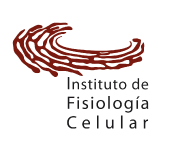Mouse Embryonic Stem Cells Expressing GDNF Show Enhanced Dopaminergic Differentiation and Promote Behavioral Recovery After Grafting in Parkinsonian Rats
Lara-Rodarte, R., Cortés, D., Soriano, K., Carmona, F., Rocha, L., Estudillo, E., ? Velasco, I. (2021). Mouse Embryonic Stem Cells Expressing GDNF Show Enhanced Dopaminergic Differentiation and Promote Behavioral Recovery After Grafting in Parkinsonian Rats. Frontiers in Cell and Developmental Biology, 9. doi:10.3389/fcell.2021.661656
Parkinson's disease (PD) is characterized by the progressive loss of midbrain dopaminergic neurons (DaNs) of the and the decrease of dopamine in the brain. Grafting DaN differentiated from embryonic stem cells (ESCs) has been proposed as an alternative therapy for current pharmacological treatments. Intrastriatal grafting of such DaNs differentiated from mouse or human ESCs improves motor performance, restores DA release, and suppresses dopamine receptor super-sensitivity. However, a low percentage of grafted neurons survive in the brain. Glial cell line-derived neurotrophic factor (GDNF) is a strong survival factor for DaNs. GDNF has proved to be neurotrophic for DaNs and , and induces axonal sprouting and maturation. Here, we engineered mouse ESCs to constitutively produce human GDNF, to analyze DaN differentiation and the possible neuroprotection by transgenic GDNF after toxic challenges , or after grafting differentiated DaNs into the striatum of Parkinsonian rats. GDNF overexpression throughout differentiation of mouse ESCs increases the proportion of midbrain DaNs. These transgenic cells were less sensitive than control cells to 6-hydroxydopamine . After grafting control or GDNF transgenic DaNs in hemi-Parkinsonian rats, we observed significant recoveries in both pharmacological and non-pharmacological behavioral tests, as well as increased striatal DA release, indicating that DaNs are functional in the brain. The graft volume, the number of surviving neurons, the number of DaNs present in the striatum, and the proportion of DaNs in the grafts were significantly higher in rats transplanted with GDNF-expressing cells, when compared to control cells. Interestingly, no morphological alterations in the brain of rats were found after grafting of GDNF-expressing cells. This approach is novel, because previous works have use co-grafting of DaNs with other cell types that express GDNF, or viral transduction in the host tissue before or after grafting of DaNs. In conclusion, GDNF production by mouse ESCs contributes to enhanced midbrain differentiation and permits a higher number of surviving DaNs after a 6-hydroxydopamine challenge , as well as post-grafting in the lesioned striatum. These GDNF-expressing ESCs can be useful to improve neuronal survival after transplantation.




